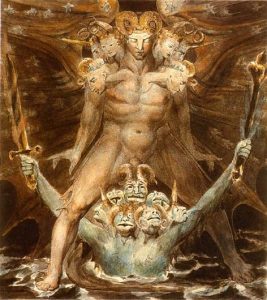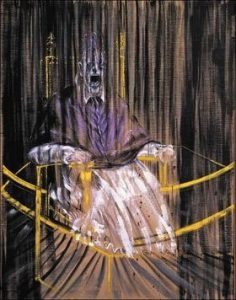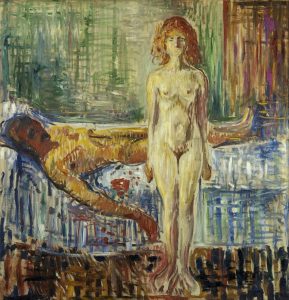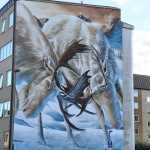MOST TERRIFYING PAINTINGS EVER MADE – 4 EXAMPLES
When we normally think of the artworld, we think of picturesque scenes, natural beauty, architecture or iconic buildings..
But some of the best, most interesting and thought-provoking work has been that which plunders the darkest depths of the imagination, those gloomier recesses of the human condition that scare, disturb and downright shock.
It is not likely that you will want to hang one of these examples on your wall, but if it comes to emotions caught in art, this selection speaks for itself…
The Great Red Dragon and the Beast from the Sea – William Blake

Better known for his romantic poetry and engravings, William Blake didn’t enjoy much success while he was alive, but has generated fresh enthusiasm after his death.
Rather than being inspired by nature, Blake’s artistic creations came from the fecund virility of his imagination.
His series of watercolours inspired by the red dragon from the Book of Revelation is particularly terrifying. This masterpiece depicts the red dragon, an avatar of the Devil, towering over the seven-headed sea beast, in all its garish glory.
Study after Velazques’s Portrait of Innocent X – Francis Bacon

Bacon was unquestionably one of the most influential and controversial artists of the 20th century, and his figurative style of painting is stark and bleak. He was also known for casually destroying pieces he wasn’t happy with, but now his remaining masterpieces sell for millions.
Throughout his artistic life, he kept returning to the portrait of Pope Innocent X by Velazquez to make variations and interpretations of his own, twisting Valzquez’s original portrait of a pensive-looking pope into something much more horrific, with his pope shrieking amidst harsh vertical brushed lines.
Dante and Virgil in Hell – William-Adolphe Bouguereau

Artists have been inspired by the scenes of twisted damnation in Dante’s Inferno since it was first published.
Bouguereau was normally associated with realistic pictures of classical tranquillity, but here he took an unexpected side-step into darker territory – the pits of Hell, to be exact – with his rendering of impersonators biting chunks out of each other to consume their identities. A demon looks on and Dante and Virgil look at the damned.
The Death of Marat – Edvard Munch

Munch (12 December 1863 – 23 January 1944) is best known for his work The Scream (1893) that depicts an isolated figure on a walkway with a wide-gaping mouth and raised arms. This work is one of the most recognizable in art but it is not Munch’s only important work or very indicative of his overall style. A Symbolist painter, he worked in macabre subject matters like the inevitability of death, the chilling stories of writers like Edgar Allen Poe, and other sinister aspects. It has often been called the “darker, Gothic side of Romanticism.” The dark aspects of Munch’s work are obvious in The Scream and in the Death of Marat I.







